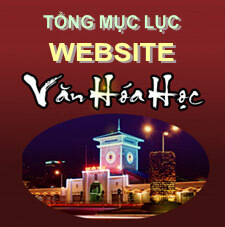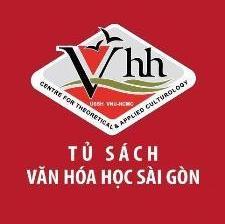The Vietnamese Diet
The traditional Vietnamese diet is healthy. Meals emphasize rice, vegetables and fish, and cooking methods often involve steaming or stir-frying.
Rice is the staple of the diet, consumed in some form in almost every meal. For Vietnamese adults, all three meals of the day may consist of steamed rice with side dishes of vegetables or fish or meat. Variations on steamed rice include congee - rice gruel; rice vermicelli topped with ground pork, bean sprouts, mint or basil; and pho - rice noodle soup made with beef or chicken broth and slices of meat, garnished with bean sprouts and basil.
Pho is sometimes eaten for breakfast. Also popular are salty cakes made of rice flour with minced pork and dried shrimp. The more Americanized Vietnamese may eat breakfasts of oatmeal or French bread with jam and tea. Lunch might consist of bahn mi, a sandwich of carrots, cilantro, onions and daikon with pork or chicken on a French roll; or rice vermicelli; or pork and vegetables wrapped in thin rice-paper wrappers. Dinner is almost always rice, plus a few steamed or stir-fried dishes, typically including vegetables and either fish or pork.
Fish is the most common protein in the Vietnamese diet. They prepare fish in a variety of ways: steamed, sauteed, fried. In the U.S., where meat is cheaper than in Vietnam, pork and chicken are also popular. Common vegetables include cabbage, gai lan (Chinese broccoli), mustard greens, collard greens and cucumbers.
The most common condiment [['kɔndimənt]: ĐỒ GIA VỊ] is nuoc mam - fish sauce (made from salted and fermented anchovies), used in Vietnamese cooking much as Americans would use salt or Chinese would use soy sauce. Most also use MSG in their cooking.
Many Vietnamese lack calcium since sources such as milk, dairy products and soy products are not part of the diet. (Vietnamese of Chinese descent, however, may eat tofu and other soy products.) Further, many Vietnamese adults are lactose intolerant. Most Vietnamese children growing up in the U.S., however, drink milk.
Vietnamese in America may be susceptible to weight gain, high cholesterol and diabetes. Vietnamese desserts often include coconut milk and coconut oil - high in saturated fat. Vietnamese with diabetes may not realize that an excess of sweets can make their illness difficult to control. Vietnamese in the U.S. also tend to increase their meat consumption. Pork and chicken is cheaper here than in Vietnam. Many think of meat as more nutritious than other foods, and don't regard fish and vegetables as particularly nutritious. Further, if a Vietnamese patient already has diabetes, it may be difficult to change their diet, since rice - which converts to sugar and elevates blood sugar - is such a staple of the diet.
The Vietnamese diet can be high in sodium, with its reliance on fish sauce and MSG as common condiments, and low in fiber (with its lack of whole grains).
Nutrition Through the Ages
Pregnant Vietnamese women typically eat a healthy diet, although health care workers should make sure they are getting enough calcium. Vietnamese women tend to not breast feed their babies, or breast feed them for less than six months, believing that formula is more nutritious for their infants. Some Vietnamese may bottle feed infants for longer than six months. Many Vietnamese women believe that breast-feeding will cause their breasts to sag. Providers may want to educate patients on the benefits of breast feeding.
Infants are typically introduced to solid foods around the sixth month, when they are given thin rice gruel. Minced meat or vegetables are gradually introduced into the thin congee around the ninth month. More solid food - vegetables, fruits, small pieces of tender meat - are given typically after the baby turns 1.
Health care workers should keep an eye on overweight tendencies in children. In Vietnamese culture, chubby children are considered healthy and a sign of prosperity. Vietnamese parents may also want to spoil their children by taking them to fast-food restaurants - sometimes daily. They may not realize that fast food may contribute to weight gain. Vietnamese children and teenagers in the U.S. tend to eat a more Americanized diet: cereal for breakfast; pizzas and hamburgers.
The elderly - especially those who have trouble chewing or have digestive difficulties - typically stick to a diet emphasizing congee and soup.
Fasting
Fasting is most often used in Vietnamese culture when people are sick. When they're sick, many Vietnamese believe it's best to drink only hot water and eat thin rice gruel (rice and water with a little salt), in order to give their digestive systems a rest. Health care providers may want to make sure that sick patients are getting enough nutrition.
The only other time fasting is used in Vietnamese culture is for religious reasons. Vietnamese Buddhists - depending on how strict they are - may adhere to restrictions such as abstaining from meat on Wednesdays and Fridays, or even follow vegetarian diets. Strict Vietnamese Catholics will adhere to Catholic dietary rituals, such as those during Lent. Fasting among Vietnamese in America, however, is not common.
Vietnamese Attitudes Toward Nutrition and Medicine
Many Vietnamese - especially of the older generation - believe in the Chinese yin/yang categorization of food, in which foods are considered either yang - "hot," or yin - "cold." In this system, "hot" foods such as mango, beef and garlic, may lead to an excess of heat in the body, causing ailments such as pimples, nosebleeds and rashes. Overconsumption of "cold" foods such as melons, greens or pork, may lead to chilliness, abdominal pain or diarrhea. They believe that sickness arises when the body's yin/yang balance is off, and will try to remedy the imbalance by eating the appropriate hot or cold food. According to the yin/yang system, in the first month after a Vietnamese woman has a baby, she shouldn't have any cold foods.
Vietnamese also believe that specific foods have medicinal value. They believe that mung beans, when ground with water into a paste, can neutralize food. They also believe that mung beans and green beans interfere with Western and Eastern medication. Vietnamese also believe that bitter melon is helpful for controlling high blood pressure.
Nguồn: http://ethnomed.org



























